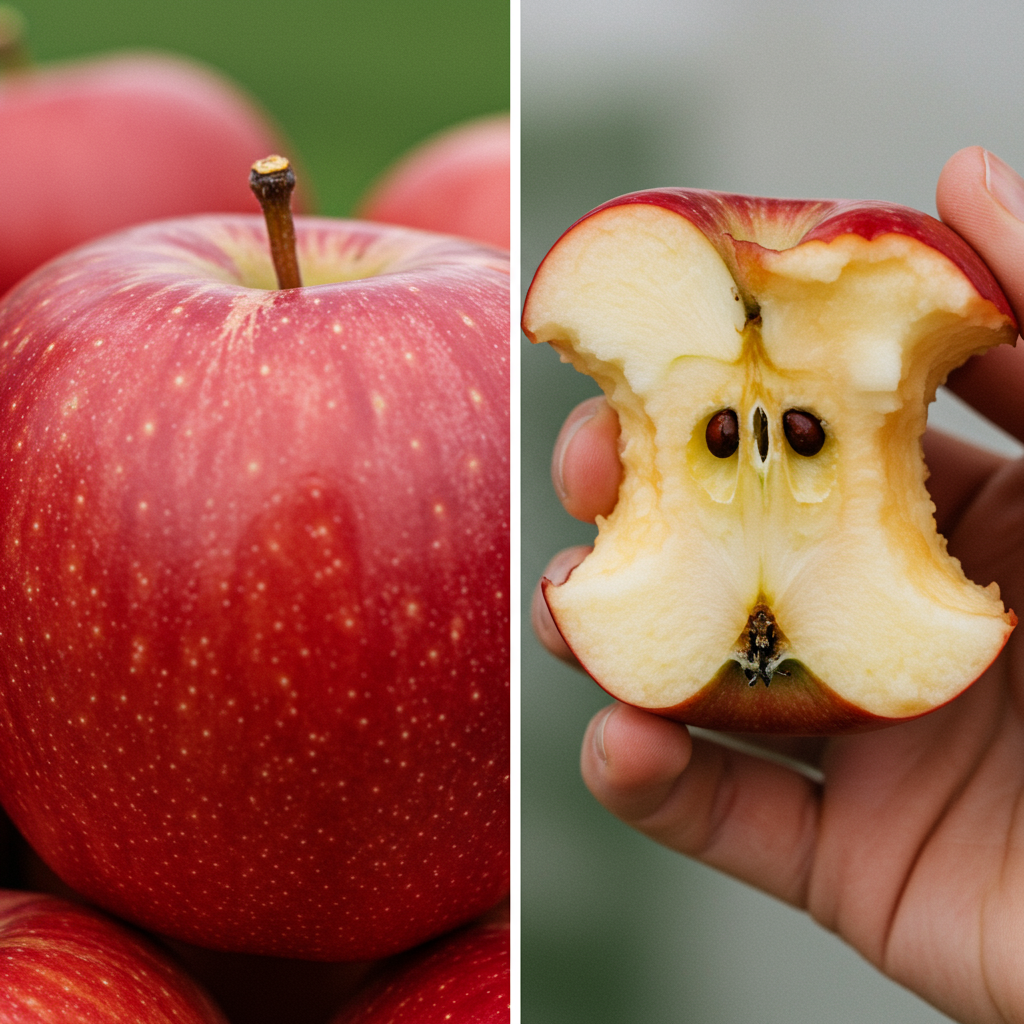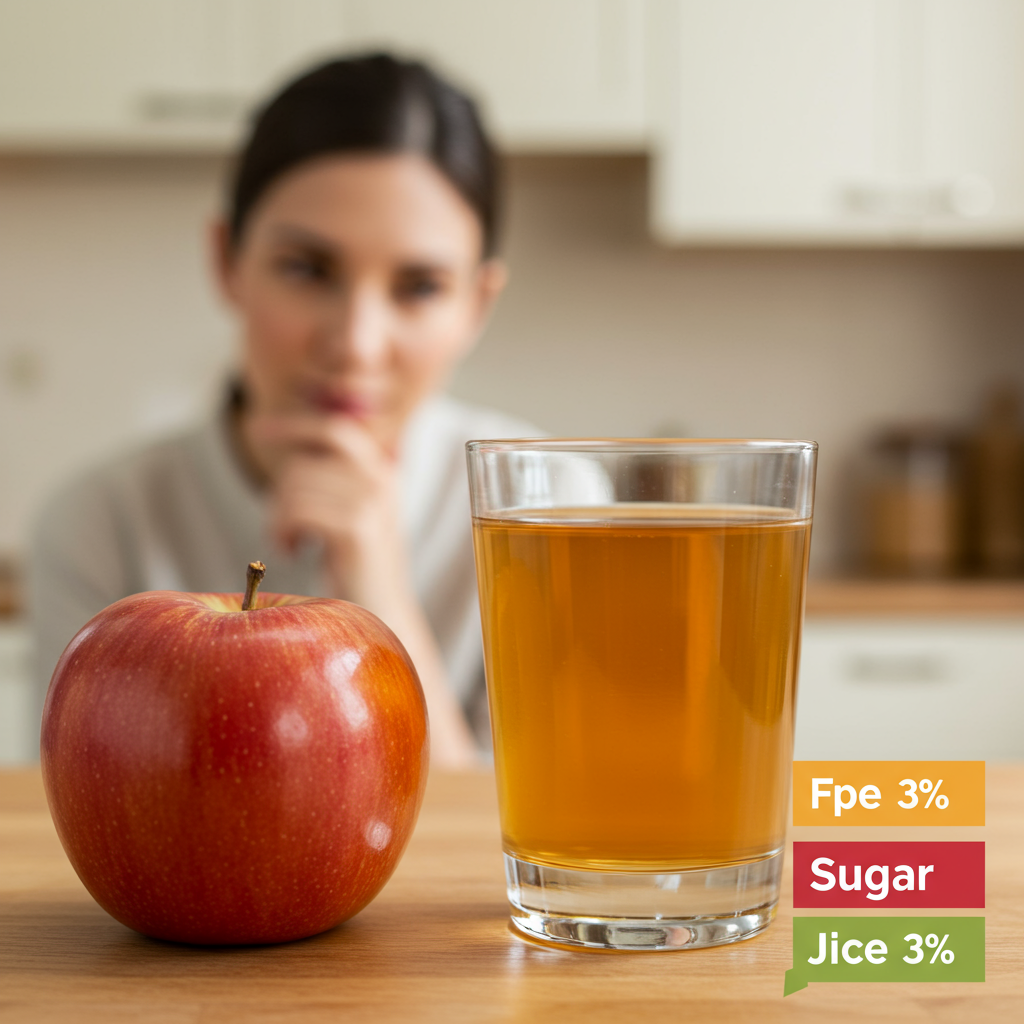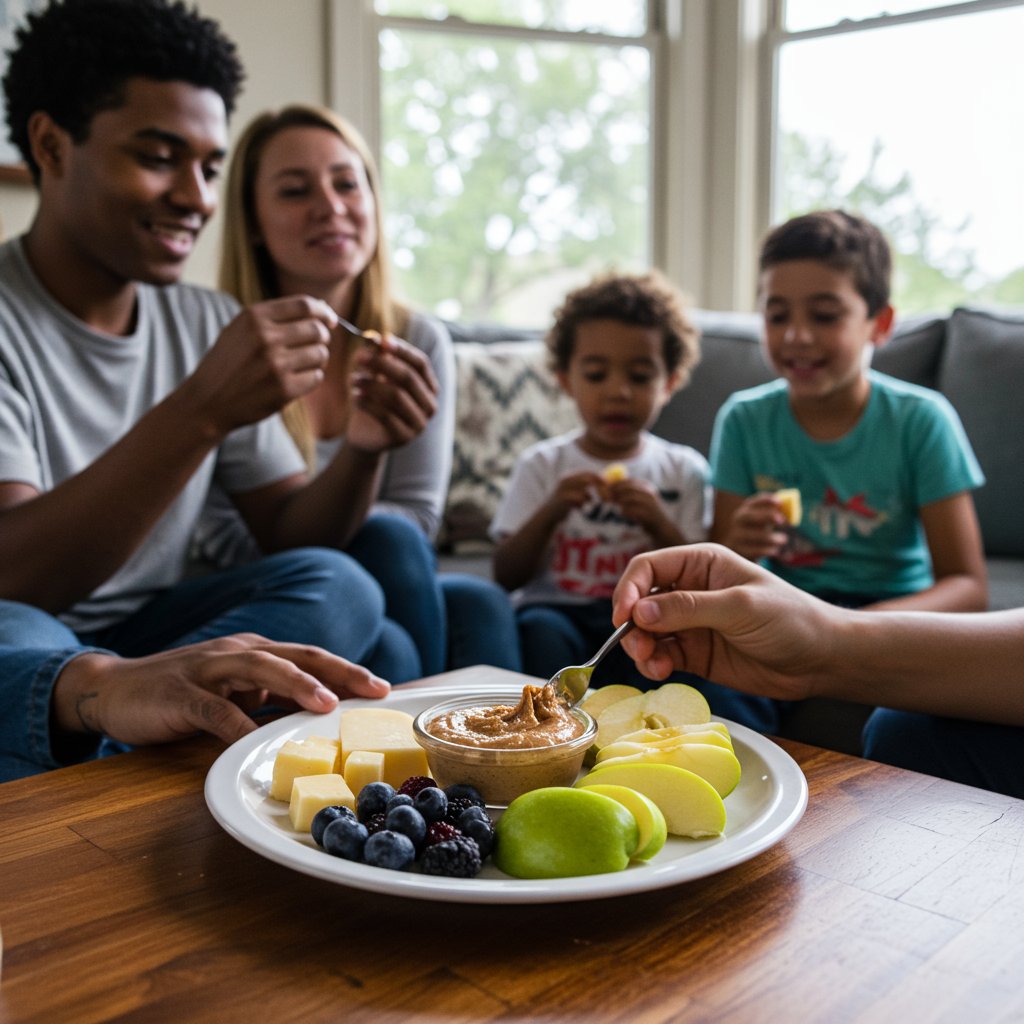Fresh vs. Pressed: The Truth About Apples, Juice, and Your Blood Sugar
Living with blood sugar issues can turn eating into a mental mathematics problem. "Can I eat this?" "What will happen to my glucose?" Few foods trigger more confusion than fruit – nature's candy. Today, let's tackle a specific comparison that perfectly illustrates the complexity of blood sugar management: whole apples versus apple juice.
The Whole Story: Structure Matters
When we consume carbohydrates, their impact on blood glucose depends not just on what we eat, but how those foods are structured. A whole apple contains approximately 15-20 grams of carbohydrates, primarily in the form of fructose and glucose. But crucially, these sugars don't exist in isolation.
Whole apples contain fiber – specifically both soluble and insoluble fiber – creating a complex food matrix that significantly affects how your body processes the sugars. This fiber network:
- Slows gastric emptying (how quickly food leaves your stomach)
- Creates physical barriers that delay enzyme access to sugars
- Reduces the rate of glucose absorption in your small intestine
The result? A much gentler rise in blood glucose levels and a more manageable insulin response. The intact cellular structure of a whole apple essentially "packages" the sugar in a way that your body must work to unwrap, creating a natural time-release mechanism.

When Juice Flows: The Processing Problem
Apple juice represents what happens when we mechanically destroy that beneficial food structure. During juicing, several critical changes occur:
- Fiber is physically removed
- Cell walls are ruptured
- Sugars are liberated from their natural matrix
A 12-ounce glass of apple juice typically contains the sugar equivalent of 3-4 apples (roughly 40-50g of carbohydrates), but with virtually none of the beneficial structural elements that moderate sugar absorption.
Without fiber's buffering effect, these free sugars hit your bloodstream rapidly, triggering a substantial glucose spike followed by a compensatory insulin surge. For someone with insulin resistance, prediabetes, or diabetes, this represents exactly the metabolic challenge we're trying to avoid.

The glycemic index reflects this difference clearly: while a whole apple has a glycemic index around 36, apple juice jumps to approximately 41-44, despite containing identical sugars. The difference is entirely structural.
Making Informed Choices: Practical Guidelines
So can someone with blood sugar issues enjoy fruit? Absolutely, with these considerations:
For whole fruits:
- Consume fruits with their natural fiber intact
- Pair fruit with protein or healthy fats to further moderate glucose response (apple with almond butter, for example)
- Be mindful of portion size and total carbohydrate load
- Consider lower-glycemic fruits like berries, cherries, and apples over tropical fruits like pineapple or mango

For fruit juices:
- Recognize that even 100% fruit juice is essentially a concentrated sugar solution
- If consuming juice, limit quantities severely (4oz or less)
- Consider diluting juice with water to reduce sugar concentration
- Understand that "no added sugar" doesn't mean "blood-sugar friendly"
- Whenever possible, choose whole fruits instead
Self-monitoring with continuous glucose monitors (CGMs) reveals this truth personally – most people with metabolic issues see dramatic differences in glucose response between whole fruit and juice.
The Bigger Picture: Context Matters
This apple versus apple juice comparison illustrates a fundamental principle of metabolic health: food processing changes metabolic impact. Whenever we disrupt food's natural structure – whether through juicing, blending, grinding, or refining – we typically accelerate digestion and absorption of carbohydrates.
This doesn't mean fruit is forbidden if you have blood sugar issues. Rather, it means understanding the contextual factors that determine a food's metabolic impact: structure, fiber content, portion size, accompanying foods, and your individual metabolic health all matter.
For those managing blood sugar issues, this knowledge is empowering. You can enjoy nature's sweetness without the metabolic consequences – just keep it whole, keep it moderate, and leave the juice behind.
References:
-
Schulze MB, Manson JE, Ludwig DS, et al. Sugar-sweetened beverages, weight gain, and incidence of type 2 diabetes in young and middle-aged women. JAMA. 2004;292(8):927–934. doi:10.1001/jama.292.8.927
-
Muraki I, Imamura F, Manson JE, et al. Fruit consumption and risk of type 2 diabetes: results from three prospective longitudinal cohort studies. BMJ. 2013;347:f5001. doi:10.1136/bmj.f5001






